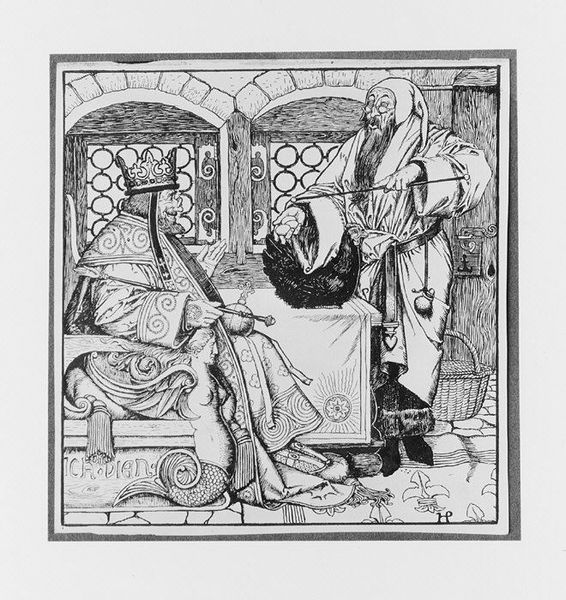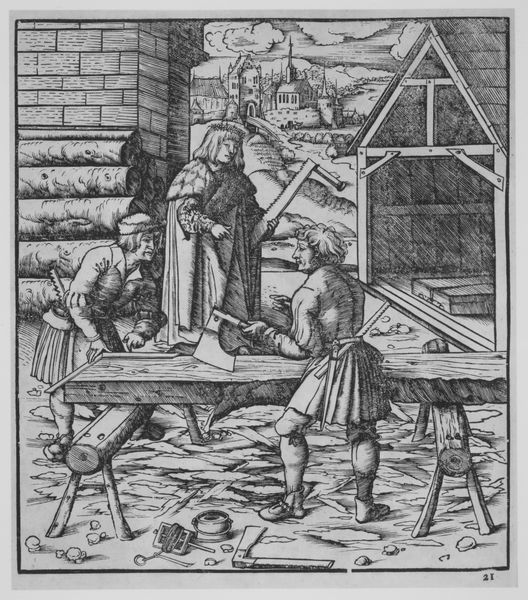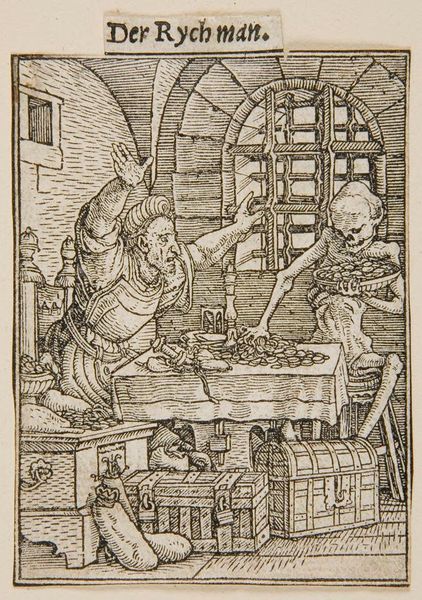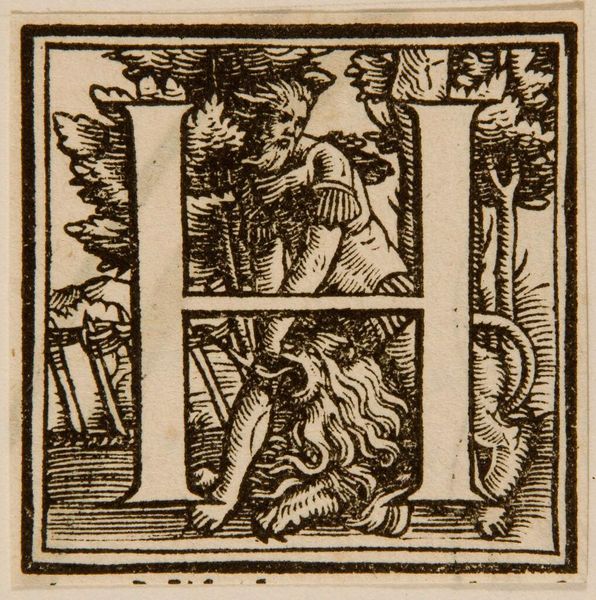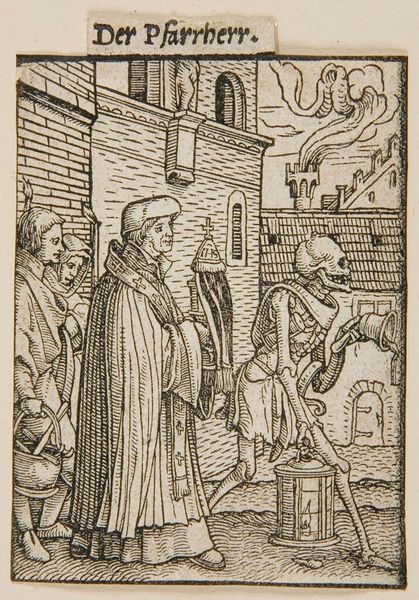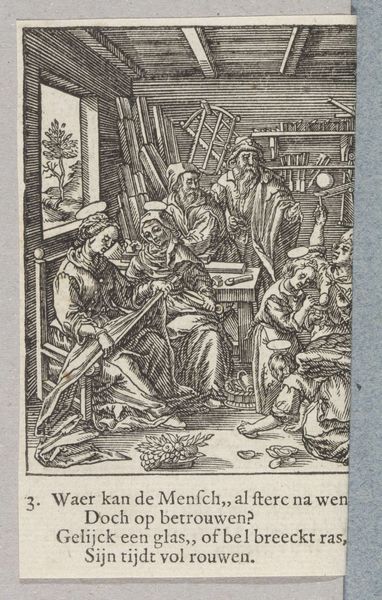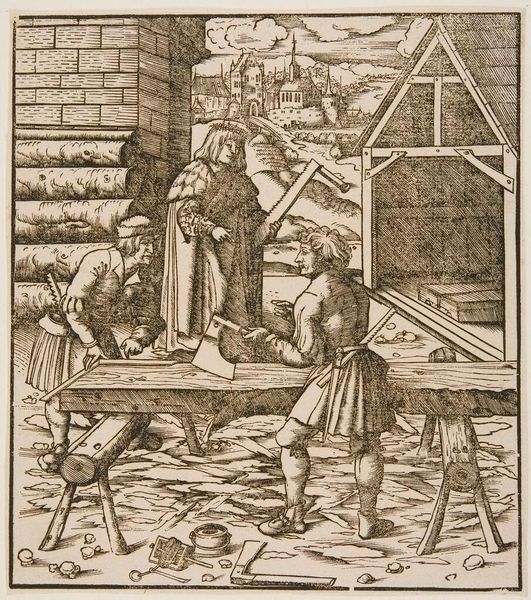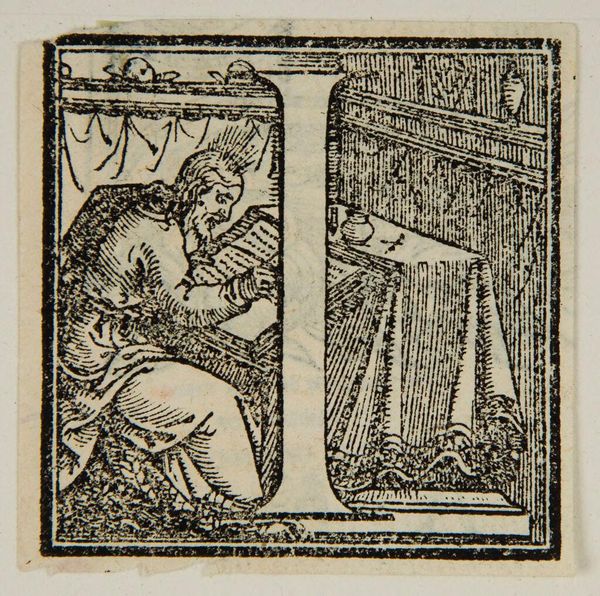
Dimensions: 20 1/16 × 15 3/8 × 5/8 in. (51 × 39.1 × 1.6 cm)
Copyright: Public Domain
Editor: This is "Apocalypsis cu Figuris" by Albrecht Durer, created in 1511. It's a woodcut print, and the level of detail for the medium is astounding. It gives off a rather ominous mood with strong linearity, and contrasting textures throughout the piece. What catches your eye when you look at it? Curator: Initially, one observes the sharp contrasts and textures Dürer achieves through the woodcut medium. Consider the dense hatching used to render shadow, juxtaposed with the pristine white spaces delineating form. How does this manipulation of light and dark contribute to the overall composition? Editor: It really emphasizes the details, especially on the figure himself and his clothing. It also draws my eye to different depths, with how he has a desk with more things on it in the far-right window as opposed to a simplistic landscape in the adjacent. It also almost alludes to this separation to different worlds of physical vs, internal perhaps? What do you think? Curator: That is an astute observation. However, moving beyond thematic interpretation, examine the spatial arrangement. The artist employs a complex interplay of lines to create a sense of depth, particularly evident in the rendering of architectural space. Do you notice how Dürer utilizes orthogonals, though not strictly adhered to, to construct perspective? Note also the contrasting textures which are critical components to understand what it is you're truly viewing. Editor: I can definitely see that now! So, would you say the spatial composition is more about understanding dimension or drawing the audience's attention to some sort of significance? Curator: I find your use of binary intriguing; it fails, however, to address Durer's expert merging of these features. Editor: I see! Thank you, I’ve learned so much from considering the construction and lines alone! Curator: And I have observed a student progress from facile narrative to an analytical engagement with form. An instructive exchange for both parties!
Comments
No comments
Be the first to comment and join the conversation on the ultimate creative platform.


